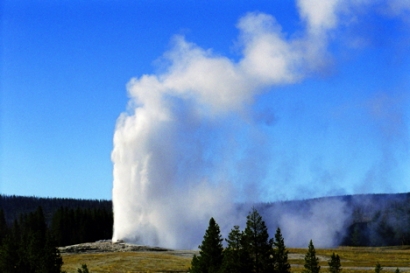
The Need for Carbon Removal
In 2018, carbon dioxide made up 81% of the total emissions released into the atmosphere. Its effects can be devastating, damaging the ozone layer and worsening air conditions across the globe. A recent Harvard study linked air pollution to higher COVID-19 deaths, as well. With such damaging effects, solutions are necessary for the immediate implementation of carbon removal strategies.
Renewable energy on a widespread scale could effectively reduce the climate crisis. However, the transition to cleaner energy from fossil fuels has been slow and reluctant. Iceland, though, is a case study of remarkable progress.
The country is a leader in renewable energy, with geothermal power being a prominent resource. Iceland is also going a step beyond now. Due to the rapid progression of climate change, renewables are no longer enough. Countries and industries must strive to be carbon negative — which is the direction Iceland is headed in.
Removing carbon from the air may sound like a long shot, but in reality, Iceland can bring that process to fruition. Geothermal is the foundation of this strategy.
How Geothermal Helps
Carbon capture and storage (CCS) is the process of removing CO2 from the air and storing it somewhere deep underground. CCS can be invaluable for facilities that release higher amounts of carbon during production. Iceland has several of these locations.
Factories that produce metals or anywhere there's energy production will benefit from taking a carbon neutral or carbon negative approach. Here's where geothermal helps.
Geothermal energy uses a ground looping system to pump heat from the earth upward and use it as energy or power. During this process, CCS technology uses steam from geothermal to capture CO2. It liquefies the gas into a condensed form that can then dissolve in water.
As for storage, experts inject this mixture into rocks about 3,300 feet below ground. The rocks almost always maintain the CO2 and use it in calcification processes. Marble and limestone both need CO2 to form.
Like other many power sources, geothermal energy also releases carbon during production. While it emits about 99% fewer carbon emissions than fossil fuels, every bit contributes to the greenhouse gas effect. Therefore, using carbon removal techniques will make geothermal even more sustainable.
Since Iceland already uses renewable energy and a significant amount of geothermal power, CCS is the natural next move.
Iceland as a Leader
Due to certain levels of the Earth's heat within Iceland — in part from the region's volcanic activity — the country is a prime location for using geothermal energy. Channeling that power for carbon removal makes Iceland a pioneer for climate action.
The geothermal facility at Hellisheiði, Iceland, is working with Climeworks, CarbFix and ON Power to be leaders in the carbon removal movement. The faster they implement CCS, the sooner they can start getting rid of their carbon emissions and the surrounding CO2.
However, this movement speaks to the larger issue of climate change. The Paris Climate Agreement is pushing for the participating countries to reduce emissions and become more carbon neutral in the coming decades.
With Iceland on the right track, it is now an example for other countries to follow. Using renewables like geothermal is Iceland's starting point. Moving to carbon removal with geothermal creates a circular system of green living and production.
Other countries must get on board to help stop and reverse the negative effects of climate change.
Geothermal Carbon Removal
With Iceland leading the charge in combining renewables with carbon removal plans, the future must be just as progressive. One without the other may not be enough to stop the climate crisis. Now is the best time to put the two together and become fully sustainable.

